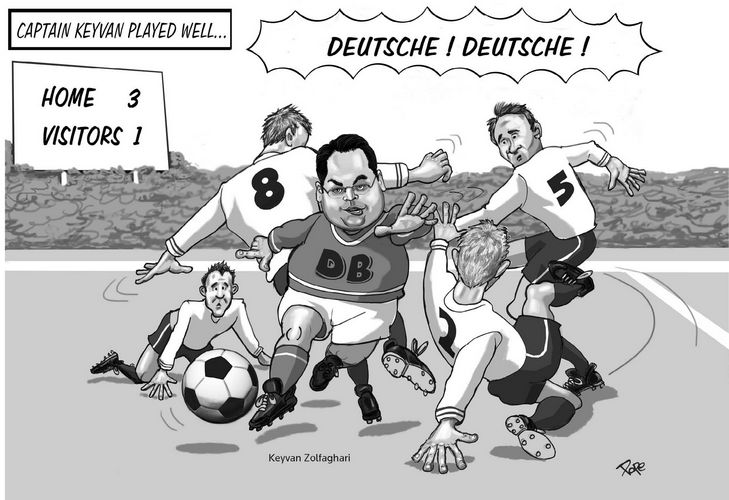Return to form: Structured equity was back in 2012 as volumes exceeded that of the previous two years and the big names returned with jumbo transactions. Securing a near 20% market share and featuring on all of the most notable deals, Deutsche Bank is IFR’s EMEA Structured Equity House of the Year.
To see the full digital edition of the IFR Review of the Year, please <a href="http://edition.pagesuite-professional.co.uk//launch.aspx?eid=24f9e7f4-9d79-4e69-a475-1a3b43fb8580" onclick="window.open(this.href);return false;" onkeypress="window.open(this.href);return false;">click here</a>.
After a stuttering start, the year ended strongly with the European equity-linked market running at a level of activity not seen in years. Volumes eventually overtook those of both the previous two IFR award years. Yet it was not plain sailing, with an active first quarter followed by a very quiet second. Several banks had to wait until after the summer for their first deal of 2012.
Deutsche Bank’s year was different as a steady stream of deals ensured its team was constantly active. It earned a staggering 19.6% market share across 15 deals.
“In a market where there are often four bookrunners as lenders are included, sole bookrunning positions are rare so building market share relies on printing a lot of deals,” said Keyvan Zolfaghari, head of equity-linked for EMEA at Deutsche.
Volkswagen’s €2.5bn mandatory convertible bond is IFR’s EMEA Structured Equity Issue of the Year, while the other candidates were the US$3bn Siemens bonds plus warrants; the US$475m Severstal transaction that secured the top premium of the year at 45% (in effect, even higher due to premium redemption) and an extraordinary US$2.6bn of demand; and Nokia’s €750m CB, which combined its status as the largest vanilla convertible bond of the year with one of the worst equity stories in Europe. Deutsche Bank was a bookrunner on every one.
It starts at home
Germany was an important market with the jumbo US$3bn bond plus warrants from Siemens, the €2.5bn mandatory convertible bond from Volkswagen, adidas’ €500m CB, plus smaller deals from real estate firms TAG Immobilien and GSW Immobilien.
Rivals argue the “German bank” was certain to capture a large portion of these deals. That’s true, but Deutsche was bookrunner on every one. Deutsche Bank did not lead its market, it completely dominated it.
Though a traditionally strong equity-linked house in Europe, Deutsche dropped back in the late noughties. The last two years saw the bank end fifth then fourth in the league tables by volume. In the IFR award year to mid-November 2011 the bank led just four deals.
Success in 2012 was driven by large deals on behalf of German issuers, but as multi-nationals with multiple banking relationships, none required a domestic bank.
In January Siemens needed US dollars. But its accounts and listing are in euros, and one thing investors (and accountants) do not like is cross-currency bonds. The bond with warrants structure used in February allowed the company to raise US dollar funding but issue euro-denominated warrants. The solution was not perfect as investors found the bonds could not be delivered against the warrants and there has been little liquidity in the bonds.
Yet by coming to market in February when investors were starved of investment-grade paper and printing at US$3bn, the largest corporate deal since the engineering business’s last visit in 2003, Siemens easily defied those imperfections.
Deutsche was sole global co-ordinator and invited the other bookrunners to participate the night before launch.
The lender was soon back with another issue on behalf of Siemens. Despite the jumbo transaction, the market was still starved of high-grade paper and bankers were aware that extra efforts were required to satisfy the investor base. Deutsche took this to a new level when Siemens wished to dispose of in-the-money warrants in technology company Draegerwerk.
The easy trade was to simply sell the warrants or the converted equity in the market. Instead, having seen how ravenous investors were for Siemens’ product, Deutsche came up with a Bunds plus warrants structure to give the market some much-needed Triple A paper. Sourcing similarly dated Bunds, the two parts were packaged and sold to technical investors, and a few outright accounts.
Deutsche was sole bookrunner on the deal which, although worth only €107.2m, maximised the value of the warrants and maintained the flow of issuance. The transaction was a clear sign of commitment to both the client and the market.
Six German issues is clearly a strong base, but strip out all of those transactions and the bank has still led the greatest number of deals in the region this year.
First and last
The second half of 2011 saw just two news issues (and two secondary offerings of bonds) so a strong start to 2012 was crucial.
Deutsche brought the first transaction of 2012 on behalf of Sierra Leone-based African Minerals. At US$350m it was sizeable for an AIM-listed company and neatly illustrates just how extensive the bank’s reach is in Europe.
The Deutsche team is proud of rarely pre-sounding its deals on the basis that they are paid to know the correct terms and sounding can put too much power in the hands of investors. A Sierra Leone credit is a harder task to gauge and sell so Deutsche as sole bookrunner and its partner banks did sound out investors and went on to launch with fixed terms.
A measure of the bank’s activity is that it was still printing deals as IFR’s awards year ended on November 15, with the €182.9m seven-year put five bond by GSW Immobilien coming on the final day.
More countries, more structures
Not only was the bank most active but it led a wide variety of transactions. Deutsche worked on two deals for Spanish aquaculture firm Pescanova and South African furniture firm Steinhoff where a new issue was combined with a tender for outstanding bonds.
The Pescanova transaction included tenders for both 2015 and 2017 bonds plus the issue of new bonds with a 100% increase option that depended on tender take-up. The three-way bookbuild was described by one banker involved as one of the most complicated deals in his time as one order could affect all three transactions.
The Steinhoff tender was a strategy to deal with the new issue marking the fifth outstanding bond from the company. The tender helped to generate a base of demand and allowed the company to issue its largest bond to date at €400m.
Swedish biotech Elekta took a different approach of completing a pre-emptive issue of convertibles to finance expansion. The approach meant the transaction was more drawn out than the usual sub-12 hour execution, but was a success with a take-up of 98%.
The other standout in terms of geographical and structural diversity was a Golar LNG’s US$250m issue of convertible bonds. The Norwegian company is listed on Nasdaq but the local market was the focus – as shown by a syndicate where Deutsche stuck out as the only non-Nordic player.
The complexity came from the structure of the company as a master limited partnership – a tax-efficient structure that is common in US ECM flow, but is unknown in Europe. Considering the company assets are held by the limited partnership and not the issuer of the bonds, some education was required.
The final pricing came at the best end of terms for investors, as they did on several Deutsche-led deals through the year, yet they were not a bargain. Indeed, the frequency with which others pre-sound investors and then price at the “best terms” for the issuer limits the usefulness of best/worse analytics.
The trick for Deutsche was building a large pipeline and then having the team (Zolfaghari and his two lieutenants Anvita Arora and Xavier Lagache) execute it.



